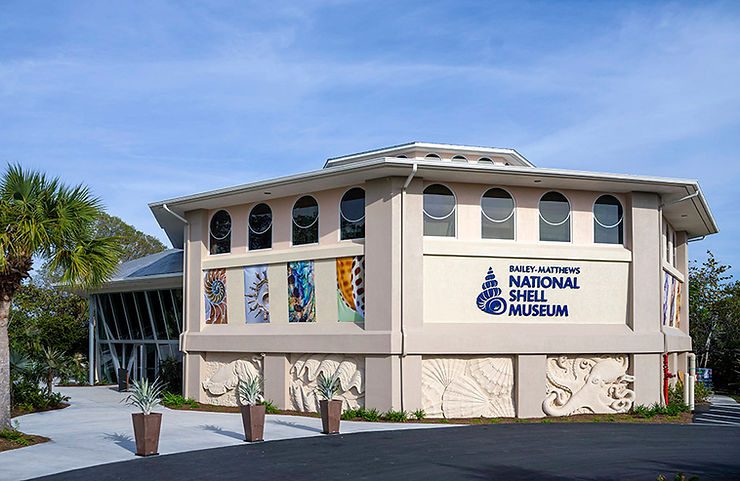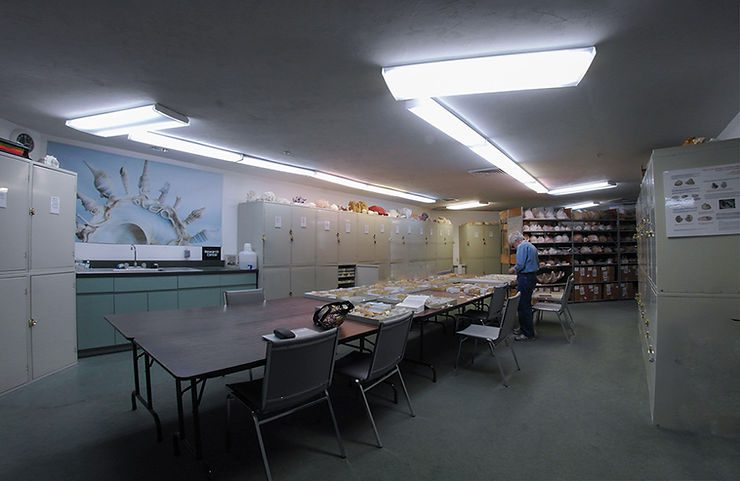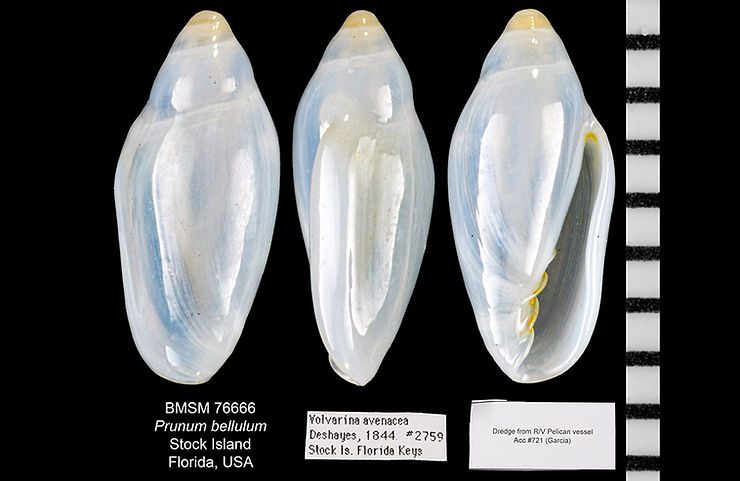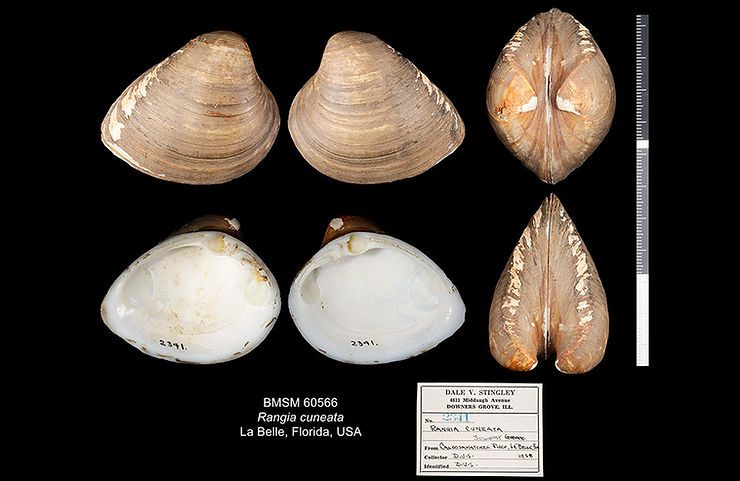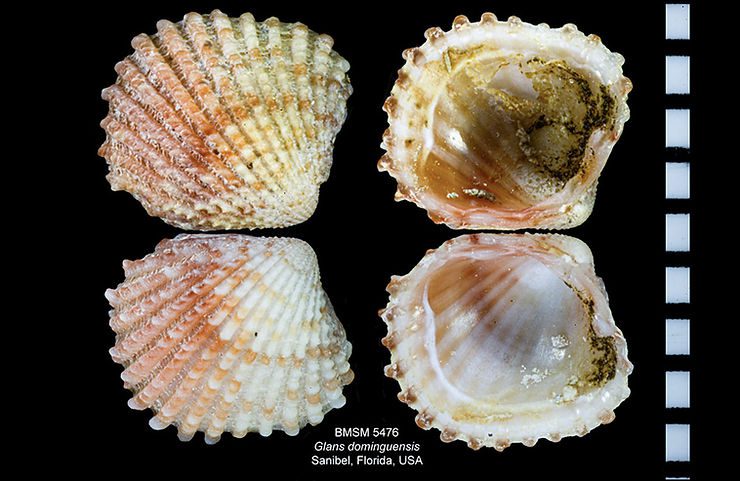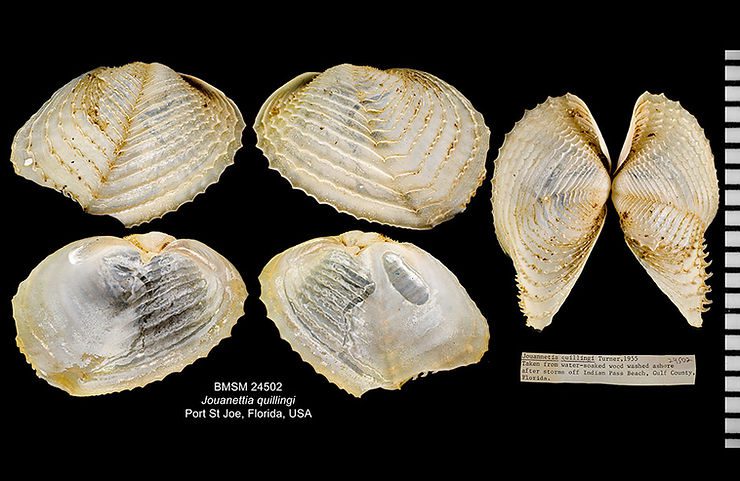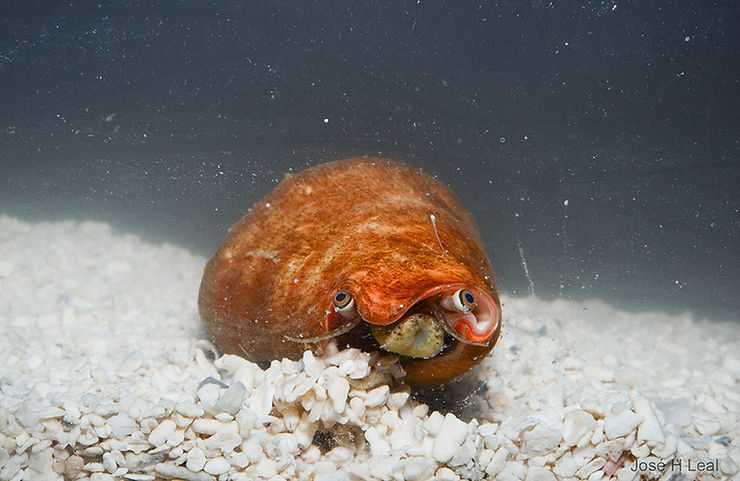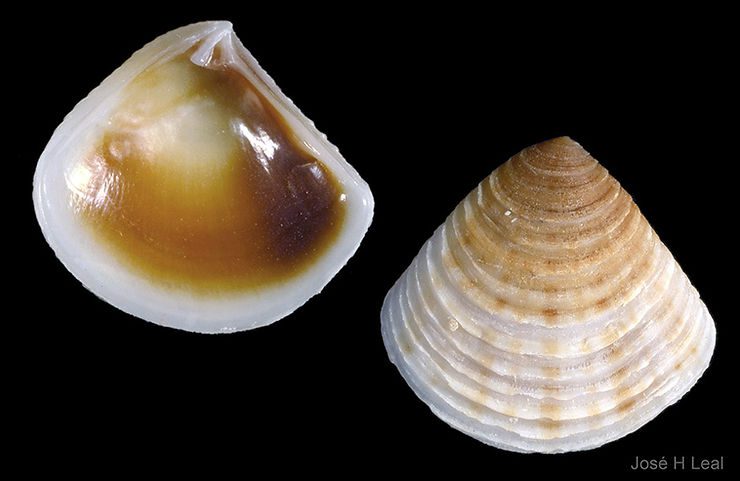
Shell of the Week: The Miller Nutmeg
Last week, using the Exquisite False Dial as an example, I introduced open-coiling, a situation where successive shell whorls do not touch each other, each whorl maintaining regular, proportional distances from its neighboring whorls. Other gastropods with open-coiling are, for instance, some members of the nutmeg family Cancellariidae, such as Extractrix milleri (Burch, 1949), from the eastern Pacific Ocean including the Galápagos Islands (below), an attractive gastropod related to our Common N
